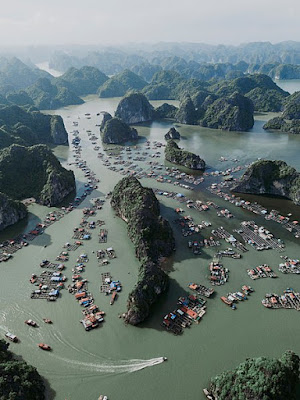And yet...
The temptation to focus on short-term profit over long-term sustainability is creating serious problems and putting at risk the very destinations which are drawing visitors to Vietnam in the first place. Nowhere is this more apparent than at some of the country’s most popular world heritage sites: Hoi An, Ha Long Bay and, most recently, Trang An.
Hoi An Ancient Town was designated a world heritage site in 1999. A small-scale trading port between the 15th and 19th centuries, Hoi An began to attract foreign visitors in the late 1990s, who came to enjoy the city’s remarkably well-preserved historic centre as well as the pristine white sand beach at nearby Cua Dai.
Fast-forward 20 years and you will find a very different place. Hoi An received 3.2 million visitors in 2017, a 22 percent increase over the previous year and an all-time record for the town. For my part, returning to Hoi An last summer for the first time in seven years, not only was I taken aback by the crowds and congestion but there seems to be very little going on in the historic centre apart from tourist-oriented stores and services.
 |
| Tour groups visiting Hoi An's iconic Japanese Bridge (Credit: G. Kipling) |
A case in point is the near disappearance of much of Cua Dai beach due to coastal erosion. Though Vietnamese authorities emphasize external factors like global warming and rising sea levels, it is clear that uncontrolled hotel development and widespread sand-mining in the area are key contributors to the problem. And sadly even if authorities demonstrate more backbone than they have in the past to ensure sustainable tourism development in the larger Hoi An region, they are likely to find that problems that were years in the making will take decades to resolve.
Arguably the situation is even more acute in Ha Long Bay in Vietnam’s north-east. Inscribed as a world heritage site in 1994, Ha Long is instantly recognizable for its towering Karst pillars rising above the emerald waters of the Gulf of Tonkin. Indeed, for many no visit to Vietnam is complete without a cruise aboard one the countless “junks” and other assorted watercraft large and small which ply Ha Long Bay every day of the year.
As one might expect in what has historically been a largely unregulated boat-cruise industry, the result has been congestion on the water, unhappy tourists cheated by unscrupulous operators and, more seriously, a string of boat fires and other accidents which have resulted in injuries and even deaths. Uncontrolled garbage and sewage disposal are also major problems in the area, which are threatening local ecosystems and turning off tourists.
As one Australian visitor put it after taking a dip near Ha Long’s Dau Be Island: "I was only in for a few minutes. I went under and came out, covered in something — I thought it was oil — and smelled really bad. Some of the children on our boat later came out in a rash."
 |
| Aerial view of Cat Ba Island (Credit: K. Martyn) |
The seeming inability (or unwillingness?) of provincial and local authorities to protect Vietnam’s heritage sites is currently much in the public eye in the wake of the controversial construction of a 2,000-step staircase a 2,000-step staircase to the top of a mountain within the Trang An Landscape Complex world heritage site.
Located in Vietnam's northern province of Ninh Binh, Trang An boasts a lush landscape studded with precipitous limestone peaks. Well-established as a domestic tourism magnet, Trang An had already acquired a reputation for over-the-top commercialism long before this latest incident. That being said, the company involved, Trang An Tourism JSC, has shown staircase venture remarkable chutzpah with its staircase venture.
Reportedly ignoring cease-and-desist orders from the local commune as it built the staircase between August and December 2017, it was allowed to open to the public this past January and if press photos are to be believed the staircase has proven a hit with visitors.
 |
| Illegal staircase at Trang An (credit: VnExpress/Tran Quan) |
As is the way with these things, a rising public furore over the staircase finally goaded the national culture ministry to step into the fray, and just this past week it ordered the staircase's removal. Finger-pointing between local and provincial authorities has followed, yet the reality is that this is hardly an unusual tactic for unscrupulous entrepreneurs: disobey the rules and then insist you had permission all along.
As Vietnam's tourism industry continues to mature I expect that more attention will be paid to sustainable practices and we'll see fewer and fewer cases where environmental protection rules are so blatantly disregarded as was the case in Trang An. However, the existential question for Vietnam's world heritage sites is whether attitudes will change quickly enough to avoid irreversible damage in the meantime.